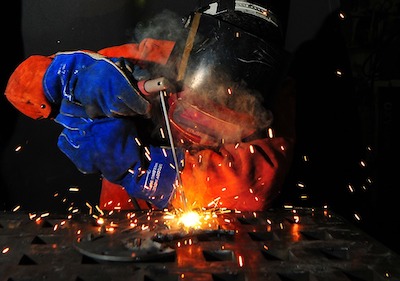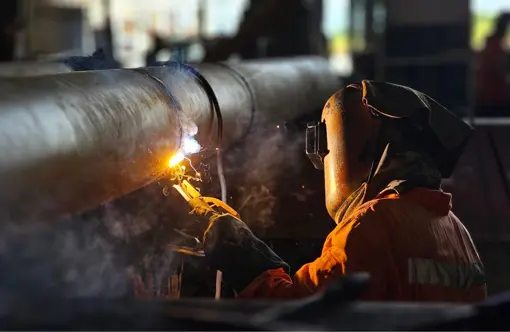Why welds crack and how Montana Mobile Welding and Repair solves them
Wiki Article
All About Welding: Secret Insights Into Techniques and Ideal Practices for Success
Welding incorporates a selection of methods, each fit for details materials and applications. Recognizing these methods, such as GMAW, SMAW, and TIG, is crucial for achieving excellent outcomes. The right tools and safety and security methods can not be overlooked. As preparation and repairing play important functions in the welding procedure, grasping these elements can greatly enhance the top quality of the final product. What are the vital elements that ensure an effective weld?Recognizing Various Welding Techniques
Welding methods include a variety of techniques, each fit to details applications and materials. Amongst one of the most typical techniques are Gas Metal Arc Welding (GMAW), Shielded Metal Arc Welding (SMAW), and Tungsten Inert Gas Welding (TIG) GMAW, likewise referred to as MIG welding, is preferred for its rate and flexibility, making it excellent for slim materials. SMAW, or stick welding, is favored for its simpleness and performance in outdoor environments, particularly with thicker metals. TIG welding supplies accuracy and control, making it suitable for intricate work and non-ferrous steels (Montana Mobile Welding and Repair Belgrade Welding). Each method has its special advantages and considerations, allowing welders to choose the very best method based on the project's demands, material type, and desired outcomes. Comprehending these strategies is essential for effective weldingNecessary Welding Devices and Devices
While different welding strategies call for particular skills, the right equipment and devices are similarly necessary for accomplishing high quality results. Necessary welding devices includes welding machines, which vary depending upon the strategy-- such as MIG, TIG, or stick welding. Safety gear, consisting of aprons, safety helmets, and gloves, assurances security and convenience during the procedure. In addition, fixtures and clamps aid safeguard materials in position, making certain accuracy in welds. Consumables like welding poles, cable, and shielding gas are likewise essential components that affect the quality of the weld. Devices such as cutters and mills facilitate surface area prep work and post-weld finishing, adding to an expert end result. Purchasing top quality devices inevitably enhances the effectiveness and effectiveness of welding tasks.Safety Practices in Welding
Appropriate safety and security practices are crucial in the welding industry to protect employees from possible threats. Welders must use ideal individual safety devices (PPE), including safety helmets with appropriate shading, handwear covers, and flame-resistant clothing. Adequate air flow is essential to decrease exposure to unsafe fumes and gases generated throughout the welding process. Additionally, workers must be trained in the correct handling of welding devices to stop crashes. Fire precaution, such as keeping flammable materials far from the welding location and having fire extinguishers conveniently offered, are essential. Normal evaluations of tools and workspaces can aid identify possible hazards prior to they result in crashes. By adhering to these safety practices, welders can develop a much safer working setting and lessen dangers related to their trade.Preparing Products for Welding
Preparing products for welding is a crucial action that substantially influences the high quality and integrity of the final item (Belgrade Fabrication). Proper preparation entails cleaning up the surface areas to eliminate impurities such as corrosion, oil, and dirt, which can jeopardize the weld. Methods such as grinding, fining sand, or using solvents are frequently employed to achieve a tidy surface. In addition, ensuring that the products fit with each other well is crucial; voids can cause weak welds. It's additionally essential to think about the placement and positioning of the elements, as this will impact the convenience of welding and the final outcome. Finally, picking the proper filler material and making sure compatibility with the base steels is vital for attaining strong, durable weldsTips for Getting High-Quality Welds
Achieving high-quality welds requires focus to detail and adherence to best practices throughout the welding procedure. Correct joint preparation is essential, guaranteeing surfaces are free and tidy from impurities. Selecting the proper filler product and welding strategy based on the base metals is crucial for perfect bonding. Preserving consistent traveling speed and angle while welding can advertise and stop defects harmony. In addition, managing warmth input is necessary; excessive warmth can cause bending and deteriorated joints. On a regular basis checking the welds during the procedure permits instant adjustments if required. Ultimately, employing ideal post-weld treatments, such as cleaning and stress and anxiety relief, can improve the longevity and honesty of the weld, eventually ensuring an effective result.Repairing Common Welding Issues
Welding often provides challenges that can influence the high quality and integrity of the end product. Typical problems such as porosity, irregular weld grains, and overheating can arise, each needing specific fixing methods. Recognizing these issues is vital for welders to boost their abilities and attain optimal results.Porosity Issues Discussed
Porosity can typically be overlooked, it remains an important issue in welding that can jeopardize the honesty of an ended up product. Porosity refers to the existence of tiny gas pockets within the weld grain, which can weaken the joint and lead to early failing. This issue usually occurs from contaminants, dampness, or inappropriate protecting gas protection throughout the welding process. To mitigate porosity, welders need to confirm that the base products are completely dry and tidy, utilize suitable securing gases, and preserve consistent welding specifications. Regularly checking the tools and environment can additionally aid identify potential issues prior to they manifest in the weld. Resolving porosity properly is necessary for accomplishing strong, resilient welds that fulfill quality standards.
Inconsistent Weld Beads
Irregular weld grains can significantly impact the top quality and strength of a completed product. Numerous factors add to this issue, including improper traveling rate, incorrect amperage setups, and inconsistent electrode angles. When the welder relocates too quickly, a bead might show up narrow and lack infiltration, while moving too slowly can create extreme build-up. In addition, making use of the wrong amperage can result in either damaging or too much spatter, both of which compromise weld honesty. The welder's technique, such as irregular torch here movement, can additionally bring about unequal bead look. To minimize these issues, welders need to concentrate on keeping constant, controlled movements and ensuring proper tools settings to accomplish uniformity in their welds. Consistency is crucial to accomplishing reputable and solid welds.Overheating and Bending Issues
Excessive warmth throughout the welding process can result in substantial getting too hot and buckling problems, affecting the architectural honesty of the work surface. These issues typically show up as distortion, which can endanger placement and fit-up, making further setting up testing. Factors contributing to overheating include the option of welding criteria, such as voltage and travel rate, as well as the type of product being bonded. To alleviate these concerns, welders ought to keep constant travel speed and appropriate warmth input while checking the workpiece temperature level. Furthermore, pre-heating or post-weld heat therapy can help ease stresses triggered by quick air conditioning - Montana Mobile Welding and Repair Belgrade Welding. Regular inspection and adherence to finest methods are crucial in preventing overheating and making sure the durability and integrity of bonded frameworksOften Asked Inquiries
What Are the Profession Opportunities in the Welding Sector?
The welding sector offers diverse career possibilities, consisting of settings as welders, engineers, teachers, and examiners. Experts can operate in manufacturing, building, aerospace, and automotive markets, profiting from solid demand and competitive salaries in numerous duties.Just How Can I Enhance My Welding Speed Without Sacrificing Top Quality?
To boost welding rate without giving up top quality, one must exercise reliable strategies, preserve equipment, optimize setups, and enhance hand-eye sychronisation. Routine training and looking for comments can additionally considerably add to attaining much faster, top quality welds.What Accreditations Are Offered for Welders?
Many accreditations exist for welders, including those from the American Welding Culture (AWS), the National Facility for Building And Construction Education and Research (NCCER), and various industry-specific companies. These qualifications boost employability and demonstrate ability efficiency.How Does Welding Influence the Characteristics of Metals?
Welding influences the properties of metals by changing their microstructure, which can lead to changes in ductility, toughness, and hardness. Warm input and cooling rates throughout the process considerably impact these material features.Can I Weld Dissimilar Metals Together?

Report this wiki page